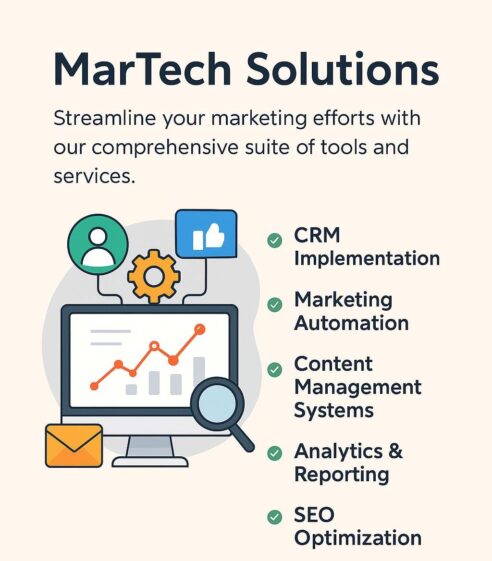
Combining strategic planning with deep technical expertise, successful web development projects in 2025 demand a relentless focus on user needs and digital innovation. At MarTech Panthers, we believe that modern web projects should not only meet business goals but also deliver exceptional user engagement and performance. Here are eight updated and expanded tips to help you manage your web development projects for maximum impact and growth.
1. Define Clear Objectives, Requirements, and KPIs
Begin every project with a comprehensive discovery phase. Go beyond basic objectives—clarify your target audience, map user journeys, and set measurable KPIs such as conversion rates, average session duration, and bounce rates. Document detailed requirements and use collaborative tools to ensure all stakeholders are aligned on deliverables, timelines, and success metrics. This clarity prevents scope creep and keeps the team focused on outcomes, not just outputs.
2. Prioritize User Experience (UX) and Accessibility

User experience remains at the heart of web development. In 2025, this means designing intuitive interfaces, minimizing friction, and ensuring accessibility for all users—including those with disabilities. Use heatmaps and analytics to understand user behavior, then iterate on navigation, content structure, and CTAs. Incorporate accessibility best practices (such as ARIA labels and keyboard navigation) to expand your reach and comply with global standards.
3. Embrace Responsive and Mobile-First Design
with mobile traffic dominating the web, adopt a mobile-first approach. Leverage the latest trends in responsive design, such as adaptive layouts, fluid and variable fonts, container queries, and viewport-based typography. Ensure your site looks and functions flawlessly across desktops, tablets, and smartphones. Don’t forget to test on various devices and browsers to guarantee consistency
4. Optimize Website Performance
Site speed and smooth interactions are critical for both user satisfaction and SEO. Optimize images (using next-gen formats and lazy loading), minify CSS/JS/HTML, leverage browser caching, and use Content Delivery Networks (CDNs) to reduce latency. Regularly monitor performance using tools like Google Lighthouse, WebPageTest, or New Relic. Focus on Core Web Vitals—Largest Contentful Paint (LCP), First Input Delay (FID), and Cumulative Layout Shift (CLS)—to boost rankings and engagement
5. Implement SEO Best Practices from Day One
Integrate SEO into every stage of development. Conduct thorough keyword research, craft descriptive meta tags, and structure content with semantic HTML and logical heading hierarchies. Optimize URL structures for clarity and brevity, implement schema markup for rich snippets, and ensure your site is crawlable and indexable. Regular SEO audits and technical checks will keep your site visible and competitive
6. Strengthen Security with Proactive Measures
Cybersecurity is more crucial than ever. Implement HTTPS, strong password policies, multi-factor authentication, and regular software/plugin updates. Adopt a zero-trust security model, enforce strict identity verification, and use AI-powered real-time threat detection to identify and neutralize attacks instantly. Advanced encryption protocols will protect user data both in transit and at rest, building trust and safeguarding your reputation
7. Test Rigorously and Continuously
Testing should be integrated throughout the development lifecycle. Conduct usability, performance, and cross-browser/device testing to catch issues early. Use automated testing frameworks and real-time monitoring to ensure ongoing quality. Consider A/B testing for critical features or CTAs to optimize user engagement and conversions before full-scale deployment41
8. Plan for Ongoing Maintenance and Continuous Improvement

A website is never truly “finished.” Establish a proactive maintenance plan that includes regular updates, security patches, and performance monitoring. Leverage automation tools for real-time alerts and dashboards to catch issues before they impact users. Monitor analytics to identify areas for improvement and roll out new features based on user feedback and evolving business needs. This continuous improvement mindset ensures your site remains relevant, secure, and high-performing
Conclusion:
Applying these 8 invaluable rules, you will increase the effectiveness of Web development projects creating user-oriented websites, that is materialized a business’s objective. We at MarTech Panthers are committed to delivering the most enormous value in web development services that shape your success in the competitive digital environment.
For more insights and expert advice on Website Development, visit MarTech Panthers.
📩 Want to fix your automation? Let’s talk.
📞 Call us: +91 9762910165
📧 Email:info@martechpanthers.com
🌐 Visit: https://martechpanthers.com/



